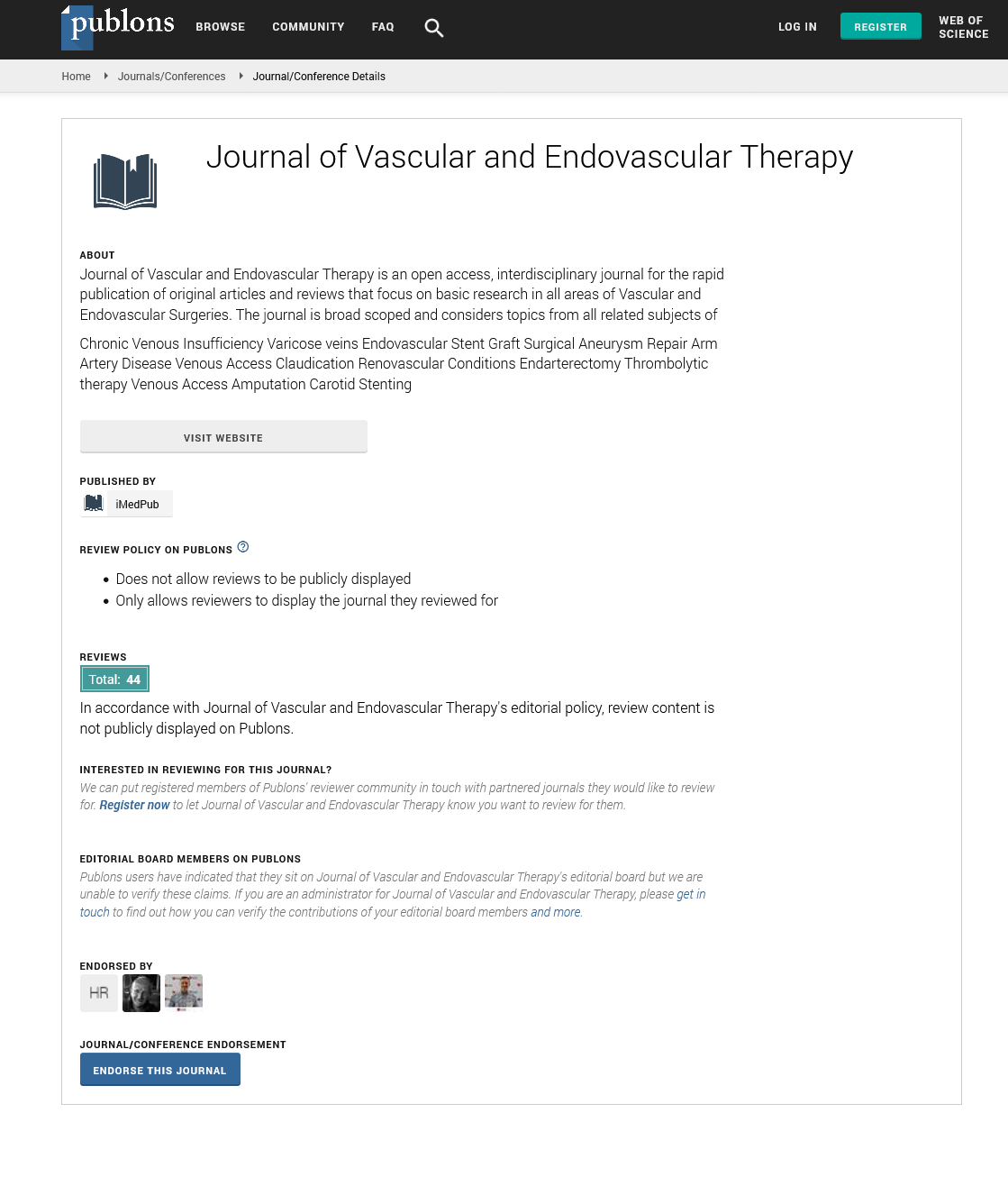State-of-the-art imaging of the peripheral vasculature
3rd Edition of World Congress & Exhibition on Vascular Surgery
May 24-25, 2018 London, UK
Ruediger E. Schernthaner
Medical University of Vienna, Austria
ScientificTracks Abstracts: J Vasc Endovasc Therapy
DOI: 10.21767/2573-4482-C1-002
Abstract
BACKGROUND: PAOD is a clinical diagnosis, the clinical Rutherford classification is based on walking impairment and the extent of ischemic ulceration. However, the complete delineation of the peripheral vascular tree is mandatory for treatment decision and planning according to the TASC guidelines (1). For long time, digital subtraction angiography was considered the gold standard due to its high temporal and spatial resolution. However, DSA is an invasive procedure requiring intra-arterial application of contrast agents, with an associated risk of complications (2) and the exposure of both patients and observers to ionizing radiation. Thus, MR angiography and CT angiography have been developed over the last 20 years in an effort to replace DSA for diagnostic purposes and to limit it’s application to therapeutic procedures. LEARNING OBJECTIVES: This course will provide you with an overview of MRA and CTA of the peripheral arteries with special emphasis on their capabilities and limitations as well as most recent technical developments (3-5). The following issues will be covered: • Volume coverage • Spatial resolution • Acquisition time • Accurate and fast image post-processing • Patient safety • Cost efficiency Recent Publications 1. Committee TS, Jaff MR, White CJ, Hiatt WR, Fowkes GR, Dormandy J, et al. An Update on Methods for Revascularization and Expansion of the TASC Lesion Classification to Include Below-the-Knee Arteries: A Supplement to the Inter-Society Consensus for the Management of Peripheral Arterial Disease (TASC II). J Endovasc Ther. 2015;22(5):663-77.Heilig M, Egli M (2006) Pharmacological treatment of alcohol dependence: Target symptoms and target mechanisms. Pharmacology and therapeutics 111:855-876. 2. Waugh JR, Sacharias N. Arteriographic complications in the DSA era. Radiology. 1992;182(1):243-6. 3. Edelman RR, Flanagan O, Grodzki D, Giri S, Gupta N, Koktzoglou I. Projection MR imaging of peripheral arterial calcifications. Magnetic Resonance in Medicine. 2015;73(5):1939-45. 4. Schreiner MM, Platzgummer H, Unterhumer S, Weber M, Mistelbauer G, Groeller E, et al. Multipath Curved Planar Reformations of Peripheral CT Angiography: Diagnostic Accuracy and Time Efficiency. Cardiovascular and interventional radiology. 2017. 5. Schreiner MM, Platzgummer H, Unterhumer S, Weber M, Mistelbauer G, Loewe C, et al. A BMI-adjusted ultralow-dose CT angiography protocol for the peripheral arteries-Image quality, diagnostic accuracy and radiation exposure. Eur J Radiol. 2017;93:149-56.
Biography
Ruediger Schernthaner is an expert in cardiovascular imaging. He has been developing CT angiography reformation techniques in collaboration with the Technical University of Vienna and the Stanford Medical Center for more than 10 years. He has published more than 50 peer-reviewed publications in the field of cardiovascular imaging and interventional oncology and authored the chapter “Management of Peripheral Arterial Disease” in the book “Managing Cardiovascular Complications in Diabetes”.
Email:ruediger.schernthaner@meduniwien.ac.at
Google Scholar citation report
Citations : 177
Journal of Vascular and Endovascular Therapy received 177 citations as per Google Scholar report
Journal of Vascular and Endovascular Therapy peer review process verified at publons
Abstracted/Indexed in
- Google Scholar
- Publons
- Geneva Foundation for Medical Education and Research
- Secret Search Engine Labs
Open Access Journals
- Aquaculture & Veterinary Science
- Chemistry & Chemical Sciences
- Clinical Sciences
- Engineering
- General Science
- Genetics & Molecular Biology
- Health Care & Nursing
- Immunology & Microbiology
- Materials Science
- Mathematics & Physics
- Medical Sciences
- Neurology & Psychiatry
- Oncology & Cancer Science
- Pharmaceutical Sciences


